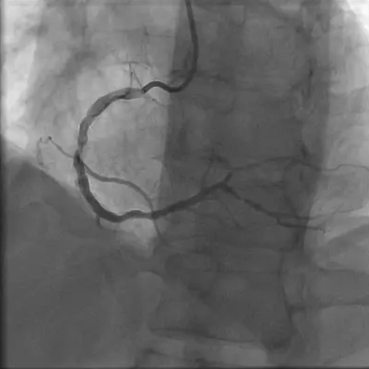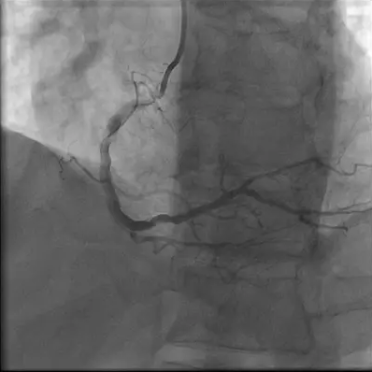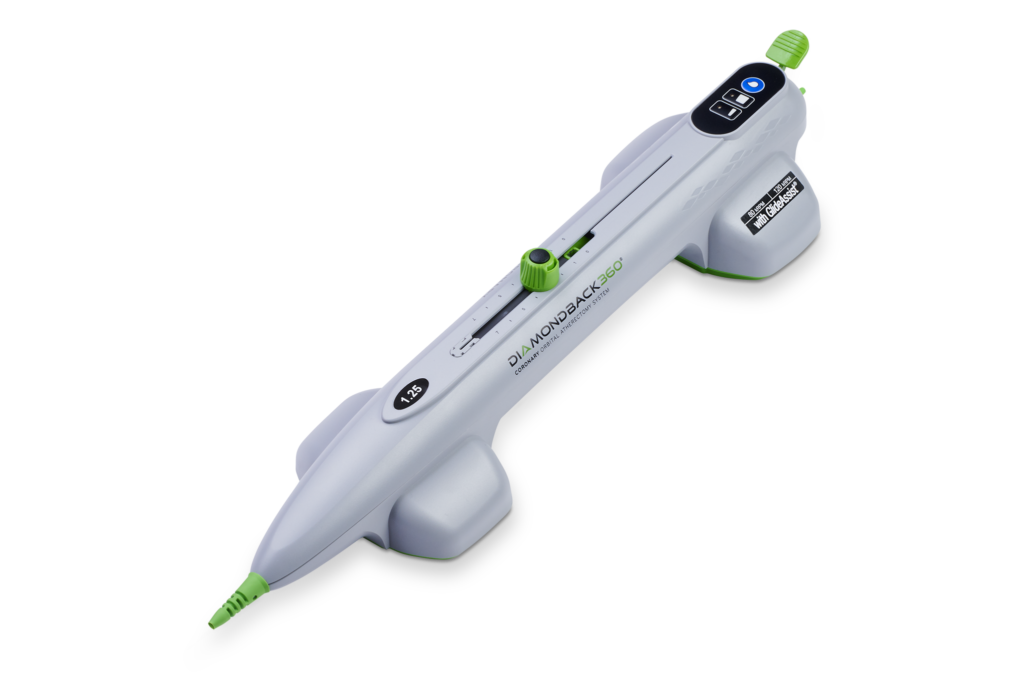Overview
Dr. Ramesh Daggubati treated a severely calcified right coronary artery using orbital atherectomy using a radial approach.
Patient History
Approximately one month prior to the intervention, a 62-year-old patient had undergone orbital atherectomy of the left anterior descending artery (LAD) with placement of a drug-eluting stent. The patient’s medical history included hypertension, hyperlipidemia, and he was a previous smoker.
The patient presented with persistent angina Class III despite being on GDMT (Guideline Directed Medical Therapy) so was brought back for treatment of a 90% stenosis of the mid-right coronary artery (mRCA)*. Angiography revealed the lesion was severely calcified. Stenosis was also noted in the posterior descending artery (PDA).
Treatment Summary
Arterial access was achieved through the right radial artery, and a 6 Fr AL .75 guide catheter was used to cannulate the RCA. A workhorse guide wire was then delivered to the distal PDA.
PCI was performed on the PDA to ensure adequate outflow. Treatment consisted of balloon angioplasty using an OTW coronary dilatation catheter (1.5 mm x 6 mm) at 10 atm for 10 seconds. Post dilatation, the workhorse guide wire was removed and the Coronary ViperWire Advance® was inserted to the PDA via the OTW coronary dilatation catheter.
Orbital atherectomy was then performed on the severely calcified lesion of the mRCA. The lesion was treated with a Diamondback 360® Coronary Orbital Atherectomy System (OAS) Classic Crown for a total of three runs. Nitroglycerin and verapamil** were given before the first atherectomy run and between each run. Two runs were performed at low speed – 80,000 rpm. One final run was performed at high speed – 120,000 rpm. After atherectomy, an Everolimus eluting coronary stent (3.5 mm x 18 mm) was delivered and expanded at the target lesion. A coronary dilatation catheter (3.75 mm x 12 mm) was inflated for 8 seconds at 14 atm and again for 9 seconds at 12 atm for post dilatation. An Everolimus eluting coronary stent (2.25 mm x 8 mm) was then delivered and expanded in the PDA.
Total procedure time was 49 minutes. Minimal contrast was used (Omnipaque 70 ml) and total fluoroscopy time was 14.4 minutes, no complications were noted during the procedure.
In summary, successful orbital atherectomy, PTCA and stenting of the mid-RCA and PTCA of the right posterior descending artery were performed. The patient was prescribed dual antiplatelet therapy for one year.
Key Takeaways
- A potentially challenging case due to severe calcification was accessed using a 6 Fr radial approach. The procedure went smoothly and no complications occurred.
- The procedure was performed with minimal use of contrast media and short fluoroscopy time.
- Orbital Atherectomy of the large mid-RCA was accomplished via single insertion of a 1.25 mm Classic Crown. The small profile of the Diamondback® 360 1.25 mm Classic Crown allowed for a trans-radial approach in a severely calcified artery.
- After starting treatment with two runs on low speed (80,000 rpm), high speed (120,000 rpm) was selected for a third and final run
Image Gallery

Pre-Procedure RCA

Post-Procedure RCA


